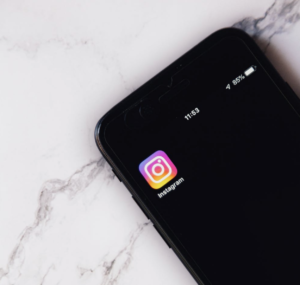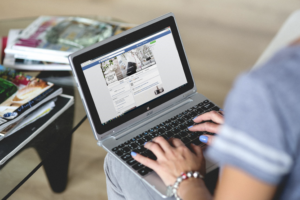While it’s not breaking news that social media marketing is a useful strategy for agencies and influencers alike, social media trends have shifted in the past year. The accessibility of social platforms continues to simplify the process of partnering with influencers, promoting products and boosting brand awareness, but each platform has gradually adapted to its audience’s preferences and we must do the same. Here are some of the most important social media trends right now and how to use them to your advantage:
Instagram is one of the most visual platforms on the market by design. Because of this, it’s also one of the most popular platforms for influencers to work with. One of the trends seen on Instagram recently is an effort by influencers to post more authentic content – content that shows the reality behind an influencer’s carefully filtered facade. According to AdAge, authenticity comes from an influencer’s genuine opinion about their subject matter. By reviewing a product or experience in their own words, rather than using designated ad copy in the caption of a post, these influencers are strengthening their connections with their audience. They are making it feel as if their lifestyle is attainable, as if the products the are promoting will truly work for you and that the destination they traveled to last week is the perfect spot for your next weekend getaway. The next time you’re looking to partner with an influencer, encourage them to write their own reviews – it will build a sustainable audience for them and establish a positive reputation for your company or brand.
Instagram also has assets that go beyond the feed. Since its 2018 launch, IGTV has gained traction as a means of endorsing brands, demonstrating a product’s function and showcasing video recaps of recent trips. IGTV sparked popularity with the launch of its standalone app, making the service accessible on two platforms. What really draws attention to IGTV from a marketing perspective is the creative nature: there are endless possibilities for content ideation. Brands are also taking advantage of the service’s time value – IGTV videos have a time range of a few minutes to hours and no expiration date, whereas videos posted to Instagram feeds are limited to one minute in length and stories to just a 24 hour lifetime. Louis Vuitton recently used the app to showcase an 11-and-a-half minute behind-the-scenes look into the debut of artistic director Virgil Abloh’s first menswear line with the brand, a strategy resulting in over 561,000 views so far. When considering influencers or advertising strategies, IGTV may be a cost-effective route to increasing viewership.
Timing is everything when it comes to social content, so agencies are constantly adapting their strategies for scheduling content to match the current trends of their audience. According to Sprout Social, engagement rates on Facebook consistently peak at certain times throughout the week, with Wednesdays at 1 p.m. and Fridays at 11 a.m. being the most effective time to post about consumer goods. While this timeframe will not be the same across all industries, it is important to have an understanding of your target consumer’s social media habits when considering the timing of your posts.
Although traditional paid social is still trending, boosted posts are also experiencing a rise in popularity. Paid social refers to the traditional advertisements that appear on your feed, whereas boosted posts are organic posts that reach you as a result of Facebook’s algorithm, regardless if you follow the account where the post originated from. Both paid social and boosted posts carry their own benefits, and the strategy that is best for your brand depends on your overall campaign goals and budget. Paid Facebook ads typically cost more because you are paying per click. At the same time, they offer the freedom to choose approximate placement, target specific demographics and set campaign goals while still maintaining creative freedom with the ad’s design. Boosted posts lack that creative freedom. This type of promotion is simply an organic post with a goal of increasing visibility without the extra design work, cost and placement of a traditional advertisement, making it a cost-effective way to drive traffic to your page. While paid advertising costs can vary, the minimum cost to boost an organic post is just $1 per day. Paid ads and boosted posts can be used together to minimize costs while maximizing Facebook’s ad capabilities, so both avenues should be considered within a social media marketing plan.
Content marketing on Twitter is a two-way street. A tweet is not just a message, it’s the start of a conversation. That conversation can lead to any number of outcomes – follower growth, brand awareness or community building – so it’s important to establish the goals of a Twitter strategy at the beginning of a campaign. Mention.com recommends releasing a variety of purposeful content, including the use of visuals and website links, with a consistent hashtag to add purpose or clarity to the brand’s overarching goal. According to HubSpot, tweets with visuals received 150 percent more retweets than those without in 2018. Visuals have proven to provoke a lasting connection between a message and a user, these connections then drive conversation and conversations pave the road to an engaged online community. With the proper strategy in place, your message has the power to be so much greater than 140 characters.
While social media will continue to evolve as a means of marketing, the message is always the same: today’s trends are tomorrow’s strategy.



